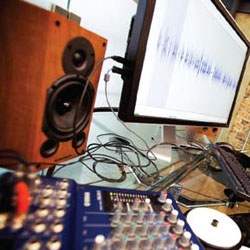Anyone who’s ever mixed a live recording knows that it’s a lot different than mixing tracks recorded in the studio.
How? Dealing with audience tracks for one, and leakage for another. With that in mind, here are a series of steps you can use to maximize that mix.
1. Set Mixing Priorities
Assuming that you’re not going to replace instruments that are played badly or don’t sound that great, your mix may be determined not by the instruments themselves but by how they’re played.
The best strategy is to emphasize the strongest performances and keep the weakest ones low in the mix.
As an example, while it’s normal for most engineers to build their mix around the drums (although some mixers start with the bass and others with the lead vocal), that process might not work well if the drums are the weakest played part.
Emphasizing a stronger part will take the focus off some shaky playing, and even though the mix might not have the punch you’d like, the final product will be better for it.
2. Place The Audience
A big question for someone new to mixing a live show is how to balance the audience against the instruments. Generally speaking, the level of the audience is determined by the sound of the room and by the needs of the artist.
If the sound of the audience tracks is pretty good, they can be placed higher in the mix to add some “glue” where it’s appropriate.
Likewise, if the artist wants the energy of the audience as a prominent feature the audience level can also be raised.
If the sound of the audience and room sounds bad, the tracks have little room sound and just audience, or the artist or producer prefers a drier sound, then the audience tracks are brought back in the mix.
Regardless of where the audience tracks end up in the final product, don’t wait until the end to bring them into the mix. Check them against every instrument to see what the interaction is.
3. Embrace The Leakage
For those who normally mix studio tracks, instrument and monitor leakage is a departure from what you’re used to. The tracks are never as clean as in the studio, unless all the instruments are recorded direct (even then, the vocals will have some sort of leakage).
The real trick is to use that leakage to your advantage to fill out the sound. Don’t try to get a clean mix because it won’t likely happen. Best to get a general balance first and gently message levels with the leakage in mind.
4. Gates Can Help
One way to clean up the leakage a bit is to use a gate on any instrument with excessive leakage, but use it judiciously. If a gate is set to decrease the level of an instrument to infinity (mute it), it may sound unnatural and probably affect the sound of other instruments leaking into the one you gated.
Best to set the gate to gently decrease the level by 3 or 6 dB and see how that affects the sounds of other instruments.
5. Pan To The Picture
If the show is being mixed to picture, then you’re pretty much stuck with panning as you see it. That being said, it almost always helps with the phase if everything is panned the way the band was set up on stage.















